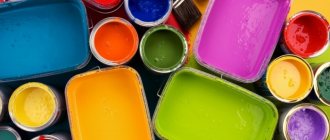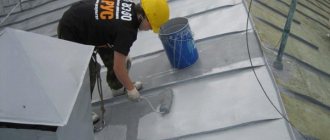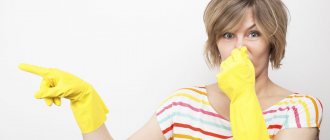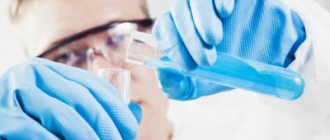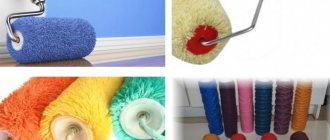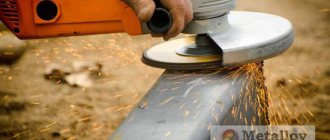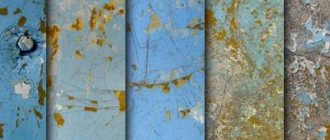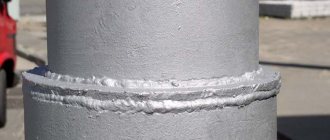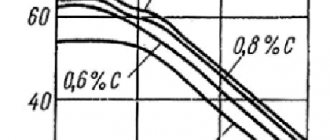How to treat metal from rust
We have all encountered in life the corrosion of metal objects - rusty spots. Corroded locks, bolts and tools not only look unattractive, but are also unusable. To date, many drugs have been invented to combat corrosion damage to metal objects.
When interacting with water and oxidation, the metal is destroyed and rust is formed. Let's look at the advice of professionals on how to treat metal against rust and prevent its further occurrence.
Read also: Rotational translational mechanism
Oxidized or raven metal
If you ask any man what the dark coating of a pistol or machine gun is called, he will immediately answer - “blueing”. Indeed, the black or bluish color of the weapon resembles the color of the feathers of a crow, which is where it got its name.
I recommend: Collapsible formwork: types, main components, comparison with disposable formwork
This coating is also called oxidation or blackening. Surprisingly, the black protective layer is made up of oxides, chemically similar to rust. Their protective properties are provided by their high density and ordered structure.
Blueing is a fairly popular method of protection. In addition to weapons, a variety of parts and tools are also subjected. In particular, the popular self-tapping screws also received a black color due to oxidation.
Preventing rust
Prevention is considered the main stage in the fight against corrosion damage. The simplest and most effective way to prevent the appearance of rust stains is considered to be painting metal objects and surfaces, which will not only update the appearance of your interior, but also create additional protection from moisture and oxygen.
Recommendations for painting structures for protective purposes:
- before you start painting, you need to clean the old layer with a spatula and sand the rust-affected areas with a grinder or sandpaper;
- treat the surface with a degreaser;
- Apply an anti-corrosion primer to the metal for the appropriate type of metal structures;
- Perform permanent painting of metal surfaces in clear weather so that moisture does not get under the dye;
- You can use both oil and enamel dyes, but pay attention to their properties and resistance to high temperatures;
- It will be more convenient to treat a flat surface with a soft roller, and in hard-to-reach places with a long brush.
An alternative is to use enamel primer, which can prevent rust stains and provide structural protection.
Powder coating
An alternative to paint and varnish compositions was powder coating, invented in 1950.
Externally, the application process is similar to spraying with compressed air. However, the absence of “fog”—a suspension of paint in the air—is immediately striking. The part itself seems to attract paint, which settles on it in an even layer.
I recommend: What to do when an extension settles
The attraction provides electricity. The part itself is charged with a positive charge, and the paint with a negative high-voltage charge. And since unlike charges attract, the paint sticks to the metal, just as pieces of paper stick to a comb rubbed against hair.
Then the part is heated to a temperature of 200-250 degrees. The paint melts and, spreading, forms the thinnest, only a few tens of microns, but durable dense layer.
Strict technological requirements and expensive equipment dictate a cost that is one and a half to two times higher than that of conventional paint. However, the high quality of monolithic polymer coatings allows them to compete on equal terms with traditional ones, but even displace them in some cases.
Today, the application of powder coatings has become commonplace; it can even be ordered via the Internet https://oooprofpokraska.ru/metall/.
Using a rust converter
Neutral rust converter is in great demand due to its natural composition and the absence of harmful chemical components. First, you need to remove loose rust, then stir the product until smooth and apply it to the surface with a brush or spray for a certain period of time in accordance with the instructions for use. When the red color of the spots changes to a black tint, this will indicate the successful breakdown of rust. If the corrosion layer is thick, you will need to apply the product several more times. After the signs of corrosion disappear, leave the structure to dry completely.
As a result of exposure of iron to air and other substances, it oxidizes. There is an electrical, chemical, electrochemical reaction, after which rust is formed. Various methods are used to clean rusty iron and further protect it.
Disease and cure
When we pronounce the phrases “steel character”, “iron word” as a synonym for strength and reliability, we do not think about how defenseless iron can be.
Leaky heating pipes and car bodies, collapsed bridge and ceiling structures are the result of improperly done or damaged paint.
But there is always a cure for rust teeth, the main thing is not to delay treatment, and even better with timely prevention. Leave your tips and comments below. Subscribe to our newsletter. Good luck to you and good luck to your family!
Rust control methods
Iron corrosion damages industrial equipment and causes many losses. To prevent this from happening, you need to properly treat the surface with high-quality paints and varnishes. The abrasion-resistant cleaning method is considered the most effective.
Read also: Diamond cutter for engraver
There are 3 ways to prevent rust stains:
To prevent corrosion, structural stainless steel is used. When equipment is designed, all parts are protected from the effects of a corrosive environment with adhesives, sealants, and elastic gaskets.
With the active method, the parts are exposed to an electric field using equipment that supplies direct current. To increase the electrode potential of iron products, a suitable voltage is selected.
Sometimes sacrificial anodes taken from more active elements are used; this method is called passive. Metal parts are protected by a special anti-corrosion coating.
Oxygen corrosion occurs on tin-plated parts. Paint, enamel or polymers are used to protect exposed metal from water and air. Often steel is coated with tin, nickel, zinc, and chromium. The base material remains protected even after partial destruction of the protective layer. Zinc has a more negative potential, so it rusts first.
Tin cans are made from tin. When the tin layer is deformed, the iron quickly rusts, since the potential for such protection is more positive. The metal is protected from corrosion by chrome plating.
Zinc and magnesium have a more negative potential, making them excellent for coating metals. This method of protection is called cathodic; it prevents the development of a corrosive coating on many products. Zinc plates are installed on marine vessels, underground communications, and other equipment to protect the hull.
An oxide film is formed on the zinc and magnesium layers, which inhibits the destructive process. If you add a little chromium to the steel, the products will be protected.
Thermal spraying is used to combat corrosion and helps restore various equipment. Using special equipment, another metal is applied to the surface, resulting in corrosion occurring slowly.
Metals that are to be used in an aggressive environment are treated with thermal diffusion zinc coating. This method provides the greatest protection; the coating does not peel off or chip after impact or deformation.
The metals are treated with cadmium, which protects well even in sea water. Cadmium is highly toxic and is therefore not used often.
Treatment with chemicals
Everyone understands why iron parts rust. We list the categories of chemical reagents that help get rid of corrosive formations:
- Rust converters.
- Acids.
Acids are solvents consisting of orthophosphates that help restore rusting products. The technology for using acid is simple. The metal must be cleaned of dirt and dust and treated with acid using a silicone brush.
The chemical interacts with the damaged surface for 30 minutes, after cleaning the product is wiped dry. The acid should not affect the skin, eyes, or mucous membranes, therefore, during such treatment it is necessary to wear special clothing. The orthophosphate mixture has the following advantages:
- Gentle effect on iron.
- Removing rusty deposits.
- Preventing new corrosion.
The entire surface of the metal product is treated with the converter. Active substances create a protective anti-corrosion layer that prevents its development.
- Berner - for protecting bolts and nuts that are difficult to unscrew.
- BCH-1 neutralizes rust on damaged areas and can be wiped off with a regular rag.
- "Zinkor" cleans from corrosion and prevents further destruction.
- B-52 is a gel converter that helps get rid of different types of rust stains.
- SF-1 - it is used to process cast iron, zinc, aluminum, it prolongs the service life of iron objects for a long time.
Read also: Causes of sulfation of battery plates
Most anti-corrosion compounds are made from toxic components, so you need to protect yourself with respirators, gloves, and goggles.
Application of anti-corrosion compounds
Rocket Chemical company supplies high-quality anti-corrosion products to the domestic market. We list the most popular products:
- Potent inhibitor. After treatment, iron objects do not rust for a year in an aggressive environment.
- Lithium grease – for protection and prevention. It is used to process door hinges, iron cables, chains, and various mechanisms. The protective layer is not washed off by rain.
- Silicone sealant covers metal products with plastic or rubber elements.
- Anti-corrosion spray - for treating hard-to-reach areas. The sprayer allows for deep penetration into various mechanisms. Prevents the recurrence of rusty plaque.
- The spray for removing rust stains is made from non-toxic elements. It is used to clean building materials, household appliances, knives, etc. – valid for 5 hours, after which the item is wiped or washed.
Iron is most resistant to corrosion in conditions of minimal humidity.
Epoxy-polyester paints
These are hybrid compositions obtained from polyester and epoxy oligomers. They have a number of intermediate properties, having the advantages of both film formers. The level of anti-corrosion protection is almost comparable to epoxy paints. However, they are less resistant to alkalis and solvents. From polyester paints they received relatively high weather resistance, higher than that of epoxy compounds. After painting, the products have an increased glossy shine. The best option for using such hybrid paints is to use them indoors, where we are talking about fairly thin coatings and high decorativeness.
Application: electrical equipment, household appliances, motorcycles, commercial equipment, radiators, ceramic tiles, metal furniture.
Folk remedies
You can clean metal using improvised materials:
- Lemon and vinegar help get rid of light plaque. The ingredients are mixed in equal proportions. After processing the iron, you need to wait 2 hours. Then wash off and wipe dry.
- Potatoes have a destructive effect on rusty plaque. Potatoes are cut, salted well, and applied to the spots. Oxidation products are washed off from products.
- Baking soda is highly effective. The powder is diluted with water until a thick mixture is formed. You need to wait 30 minutes, then wipe the surface dry and remove any remaining dirt.
It is not easy to treat rust so that the iron does not deteriorate. You will have to pay a lot of money for quality products. To achieve an ideal result after cleaning, you will have to organize special conditions. Only large industrial enterprises can afford this.
Useful materials
Vinegar helps fight corrosion and removes brown deposits. It can be used to clean a coin, a knife blade, a key, or jewelry.
Lime and salt are the most effective combination. The product is processed with juice, salted, and peeled with lime peel.
Oxalic acid is an aggressive agent; the vapors released as a result of a chemical reaction affect the mucous membrane of the respiratory tract, so protection is necessary. The room is ventilated. The acid is dissolved in water, an object is placed there, and the plaque is removed with an old toothbrush.
